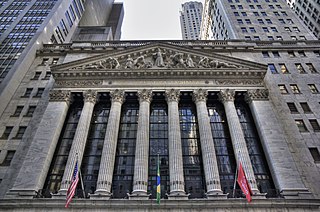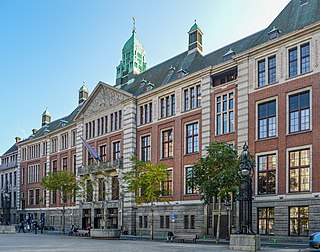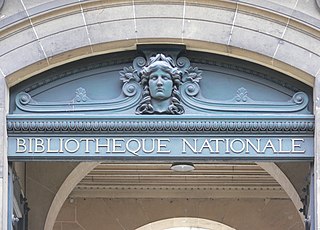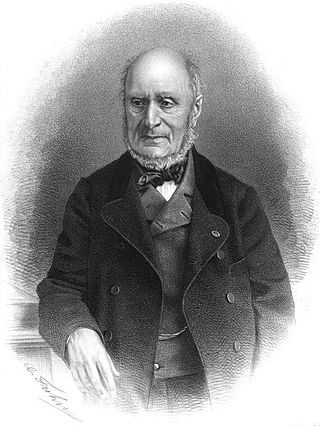
A stock exchange, securities exchange, or bourse is an exchange where stockbrokers and traders can buy and sell securities, such as shares of stock, bonds and other financial instruments. Stock exchanges may also provide facilities for the issue and redemption of such securities and instruments and capital events including the payment of income and dividends. Securities traded on a stock exchange include stock issued by listed companies, unit trusts, derivatives, pooled investment products and bonds. Stock exchanges often function as "continuous auction" markets with buyers and sellers consummating transactions via open outcry at a central location such as the floor of the exchange or by using an electronic system to process financial transactions.

A stock market, equity market, or share market is the aggregation of buyers and sellers of stocks, which represent ownership claims on businesses; these may include securities listed on a public stock exchange as well as stock that is only traded privately, such as shares of private companies that are sold to investors through equity crowdfunding platforms. Investments are usually made with an investment strategy in mind.

A stockbroker is an individual or company that buys and sells stocks and other investments for a financial market participant in return for a commission, markup, or fee. In most countries they are regulated as a broker or broker-dealer and may need to hold a relevant license and may be a member of a stock exchange. They generally act as a financial advisor and investment manager. In this case they may also be licensed as a financial adviser such as a registered investment adviser.

The 2nd arrondissement of Paris is one of the 20 arrondissements of the capital city of France. In spoken French, this arrondissement is colloquially referred to as deuxième. It is governed locally together with the 1st, 3rd and 4th arrondissement, with which it forms the 1st sector of Paris.

Euronext N.V. is a pan-European bourse that provides trading and post-trade services for a range of financial instruments.

Bourse is a station on Paris Métro Line 3, located in the 2nd arrondissement of Paris.

Alexandre-Théodore Brongniart was a prominent French architect.

The Nairobi Securities Exchange (NSE) was established in 1954 as the Nairobi Stock Exchange, based in Nairobi the capital of Kenya. It was a voluntary association of stockbrokers in the European community registered under the Societies Act in British Kenya. The exchange had 66 listed companies in February 2021.

The Casablanca Stock Exchange is a stock exchange in Casablanca, Morocco. The Casablanca Stock Exchange (CSE), which achieves one of the best performances in the region of the Middle East and North Africa (MENA), is Africa's third largest stock market after Johannesburg Stock Exchange and Nigerian Stock Exchange in Lagos. It was established in 1929 and currently has 19 members and 81 listed securities with a total market capitalisation of $71.1 billion in 2018.
A remisier is an agent of a stockbroking company and receives a commission for each transaction handled. Although the origin of the word is French, and although remisiers are still a feature of the Paris Bourse, the term is now most commonly used in the context of the Kuala Lumpur Stock Exchange and the Singapore Stock Exchange.

The Brussels Stock Exchange, abbreviated to BSE, was founded in Brussels, Belgium, by decree of Napoleon in 1801. In 2002, the BSE merged with the Amsterdam, Lisbon and Paris stock exchanges into Euronext, renaming the BSE Euronext Brussels. The most well known stock market index on the BSE is the BEL20.

Euronext Paris, formerly known as the Paris Bourse, is a securities market which merged with the Amsterdam, Lisbon and Brussels exchanges in September 2000 to form Euronext NV. As of 2022, the 795 companies listed had a combined market capitalization of over US$4.58 trillion. Euronext Paris, the French branch of Euronext which was formerly seated at the Palais Brongniart in Paris, is Europe's second largest stock exchange market as of 2023, behind the London Stock Exchange (LSE).
Cotation Assistée en Continu (CAC) was an electronic trading system used at the Paris Bourse, the French stock exchange, in the 1980s and 1990s.
A trader is a person, firm, or entity in finance who buys and sells financial instruments, such as forex, cryptocurrencies, stocks, bonds, commodities, derivatives, and mutual funds in the capacity of agent, hedger, arbitrager, or speculator.
The SBF 120 is a French stock market index. The index is based on the 120 most actively traded stocks listed in Paris. It includes all 60 stocks in the CAC 40 and CAC Next 20 indexes and 60 additional stocks listed on the Premier Marché and Second Marché under Euronext Paris. The current, frequently changing, index composition is available on the Euronext Web site.

The Rue de Richelieu is a long street of Paris, starting in the south of the 1st arrondissement at the Comédie-Française and ending in the north of the 2nd arrondissement. For the first half of the 19th century, before Georges-Eugène Haussmann redefined Paris with grand boulevards, it was one of the most fashionable streets of Paris.

Louis-Hippolyte Lebas was a French architect working in a rational and severe Neoclassical style.
An exchange, bourse, trading exchange or trading venue is an organized market where (especially) tradable securities, commodities, foreign exchange, futures, and options contracts are bought and sold.

The Bourse de commerce is a building in Paris, originally used as a place to negotiate the trade of grain and other commodities, and used to provide services to businesses by the Paris Chamber of Commerce during the latter part of the 20th century. It has its origins in a circular wheat exchange built in 1763–67, with an open-air interior court that was later capped by a wooden dome replaced in 1811 with a copper one. In a major reconstruction in 1888–89 much of the structure was replaced, although the layout remained the same and the dome was retained albeit adding glass and a mounted canvas.
















